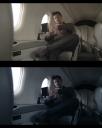
Dynamic Range / Latitude
-
Agreed Neat Video is the best noise reducer I've used - its oversampling is incredible.
-
@starstuff I'm on a PC using Sony Vegas. I line up all of my clips and frameserve out of Vegas into Virtual Dub (using Debug Frameserver), clean it there with Neat Video and transcode it into a 4:2:2 YbCr (UYVY) file using Lagarith Lossless codec. I take that finished file back into Vegas and color correct. when I compare the original footage to the transcoded footage (as good as the original looks) it's like night and day. To test them I crank up the saturation and lower the gamma all the way on both the original and new file. No comparison. You can see the noise in the original footage but the new version has no artifacts....at all. I can now go where I want to go with color correcting/unsharp mask etc..
The thing about Neat Video is when done right you lose no detail....just noise. I don't know how it does it...but it works like a miracle. I've used several noise reduction methods in the past and they all seemed to go too far in either direction. -
-
Has anyone made any headway on making movie mode patches?
-
For the record the "Absolutely correct' was in reply to "No matter which way you look at it,it is still 8bit 420".
BTW
They're both decent cameras in the right hands. -
I disagree on with the fact that epic is better, I have yet to see EPIC footage that looks better than MX R1 footage, except from major hollywood films of course, but they can make anything look amazing...
-
Absolutely correct Brian.
-
And yes Epic is better ;)
-
Oh I agree, there is a benefit, just technically it's still an 8bit 420 file wrapped in a 10bit 422 shell edited in an RGB environment. That workflow will obviously make any footage better. Does it make 10bit 422 footage into 12bit 444 footage? No, but it helps. No matter which way you look at it, it is still 8bit 420. That's all I'm saying.
-
Maybe EPIC.. ;)
Yes, I've seen the benefit of rendering to a good intermediate (Cineform, ProRes, DNxHD, etc...) at 4:2:2 with post work where you're pushing levels.
If you're just cutting in post, of course Brian202020 is correct. You can't get something from nothing.
-
Better because of price. I had a RED and sold it to someone across the ocean for $.75 on the dollar since it was just too much $ for my clients to pay. Not much tops the RED MX in image/options tho except maybe the Alexa or Epic.
-
better then RED for most of my work, just saying
-
if we had an s-log or even a flat picture style this camera would be untouchable
-
Now we just need some kind of uploadable s-log like color profile, and the GH2 will be even more amazing. Hopefully Chris comes thru with something good.
-
no I know that, I know I cant add a 2 on that 4:2:0 lol but I can bring it as close as possible with those tools... the DR of the GH2 is no bueno when I place it with my RED footage(OBVIOUSLY) but I can still get it close
-
@PerryWilson
From your second video (10:01):
"I've gone thru the process of lowering the contrast and effectively up-sampling it to 10bit from 8bit. Now let's get this straight, we're not filling in any missing numbers we're just massaging the numbers a little so we can get more performance from them. Then a little bit of noise reduction as well to get rid of extraneous noise in the video files. It also does a bit of dithering which kind of helps to reducing the banding."
He's talking about a workflow that definitely helps with 8bit files, but like he said your not actually filling in the missing numbers. Good work flow tho, I use a similar workflow. -
I think you're both correct. You can't add what wasn't actually there in the first place.
But, I use a modified version of the Robino Films workflow. My GH-2 footage comes out looking great. I can push the heck out of it without ANY noise artifacts. Been using Neat Video for the last four years... and never thought to use just Low frequency removal. I lose NO detail and the image is so robust.
I'm convinced cameras like Sony f3s and Nikon DLSRs use some sort of "automatic" low frequency noise reduction in their cams. Sometimes it seems like a little too much (glossy looking images). Sort of like GH-2's sharpening....no matter how much we feel it's turned off at -2....the camera still adds it in there agiants our will. Pure speculation....I know. :-) -
it does when you run it through neat video, unsharp mash, sharpening, and a gaussain... heres a tuitorial
also here is the difference in cineform and stock GH2 footage tell me which one has more latitude -
@PerryWilson
You realize transcoding a 8bit 420 codec to a 10bit 422 codec doesn't make it better right? -
@Hallvalla I will... and Ill be converting footage to Cineform 10bit 4:2:2 and the Canons wont know what happened
-
Thanks Perry.
Those examples certainly look good. -
@PerryWilson
That's a nice grade. Once you get the hang filming on the GH2, let us know how it compares. thx -
It also gives better latitude for grading which is what I do... here is two screen grabs from two of my films... with cinestyle I had the range to be able to crush the blacks on my own, instead of being stuck with them already crushed... this results in cleaner lows

 175771_2243692102327_1548861078_2403043_8145168_o.jpg1440 x 1800 - 118K
175771_2243692102327_1548861078_2403043_8145168_o.jpg1440 x 1800 - 118K
 289022_2243692582339_1548861078_2403044_2459793_o.jpg1440 x 1800 - 131K
289022_2243692582339_1548861078_2403044_2459793_o.jpg1440 x 1800 - 131K -
its not actually 3 stops, on the software side of it, it is actually apparent DR, and NLE's dont notice a difference
-
@sammy, for your first question IDK, i havent seen any new film modes yet... I wish I had. and yeah Technicolor designed a LogC style contrast curve, flattening it across the entire range... here is an example I did... self explanatory...
Start New Topic


Howdy, Stranger!
It looks like you're new here. If you want to get involved, click one of these buttons!
Categories
- Topics List23,993
- Blog5,725
- General and News1,354
- Hacks and Patches1,153
- ↳ Top Settings33
- ↳ Beginners256
- ↳ Archives402
- ↳ Hacks News and Development56
- Cameras2,368
- ↳ Panasonic995
- ↳ Canon118
- ↳ Sony156
- ↳ Nikon96
- ↳ Pentax and Samsung70
- ↳ Olympus and Fujifilm102
- ↳ Compacts and Camcorders300
- ↳ Smartphones for video97
- ↳ Pro Video Cameras191
- ↳ BlackMagic and other raw cameras116
- Skill1,960
- ↳ Business and distribution66
- ↳ Preparation, scripts and legal38
- ↳ Art149
- ↳ Import, Convert, Exporting291
- ↳ Editors191
- ↳ Effects and stunts115
- ↳ Color grading197
- ↳ Sound and Music280
- ↳ Lighting96
- ↳ Software and storage tips266
- Gear5,420
- ↳ Filters, Adapters, Matte boxes344
- ↳ Lenses1,582
- ↳ Follow focus and gears93
- ↳ Sound499
- ↳ Lighting gear314
- ↳ Camera movement230
- ↳ Gimbals and copters302
- ↳ Rigs and related stuff273
- ↳ Power solutions83
- ↳ Monitors and viewfinders340
- ↳ Tripods and fluid heads139
- ↳ Storage286
- ↳ Computers and studio gear560
- ↳ VR and 3D248
- Showcase1,859
- Marketplace2,834
- Offtopic1,320




